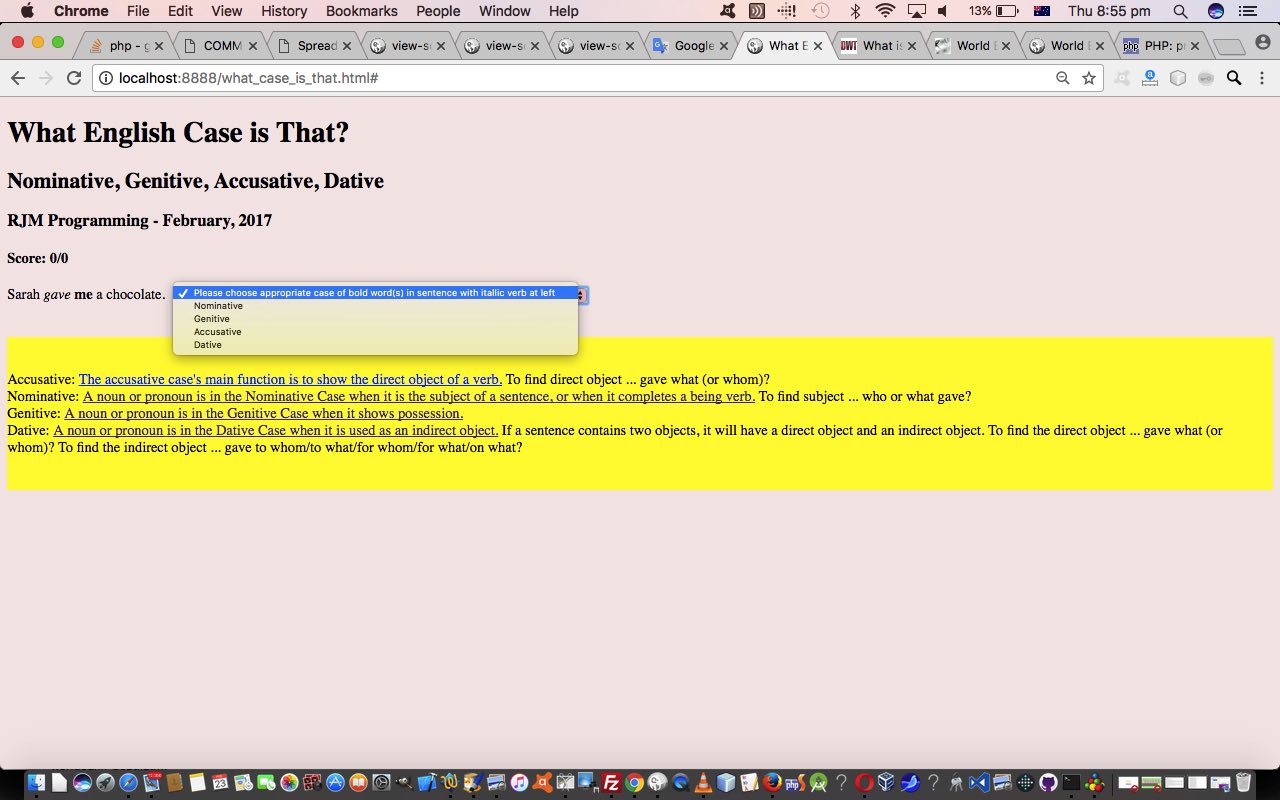Seems like English Grammar learning may be coming back into fashion here in New South Wales, in Australia. To celebrate, we’ve written an English sentence game where you classify a noun or pronoun within that sentence regarding case choices …
- Nominative
- Accusative
- Genitive
- Dative
This game could well suit ESL students as well, who may be familiar with these Noun or Pronoun Cases with their own native language.
We structure the web application written in HTML and Javascript as a randomly selected sentence with the noun or pronoun highlighted bold and the sentence’s verb is itallicized, because we present some (optional) hints, in the game, which we’ll also show below … for the sentence …
Sarah gave me a chocolate.
Accusative: The accusative case’s main function is to show the direct object of a verb. To find direct object … gave what (or whom)?
Nominative: A noun or pronoun is in the Nominative Case when it is the subject of a sentence, or when it completes a being verb. To find subject … who or what gave?
Genitive: A noun or pronoun is in the Genitive Case when it shows possession.
Dative: A noun or pronoun is in the Dative Case when it is used as an indirect object. If a sentence contains two objects, it will have a direct object and an indirect object. To find the direct object … gave what (or whom)? To find the indirect object … gave to whom/to what/for whom/for what/on what?
You can try this out for yourself today via this live run link whose underlying HTML and Javascript code you could call what_case_is_that.html for your perusal.
If this was interesting you may be interested in this too.



